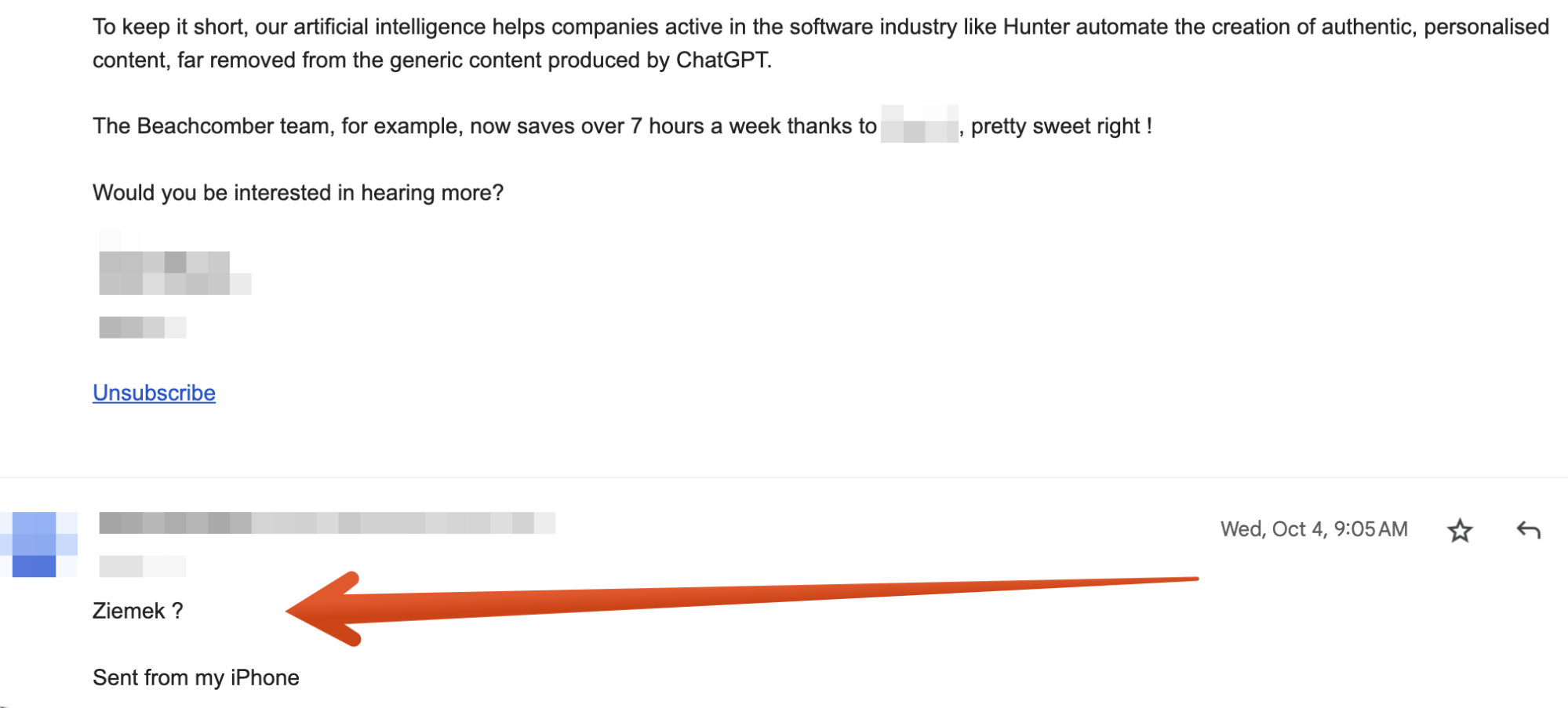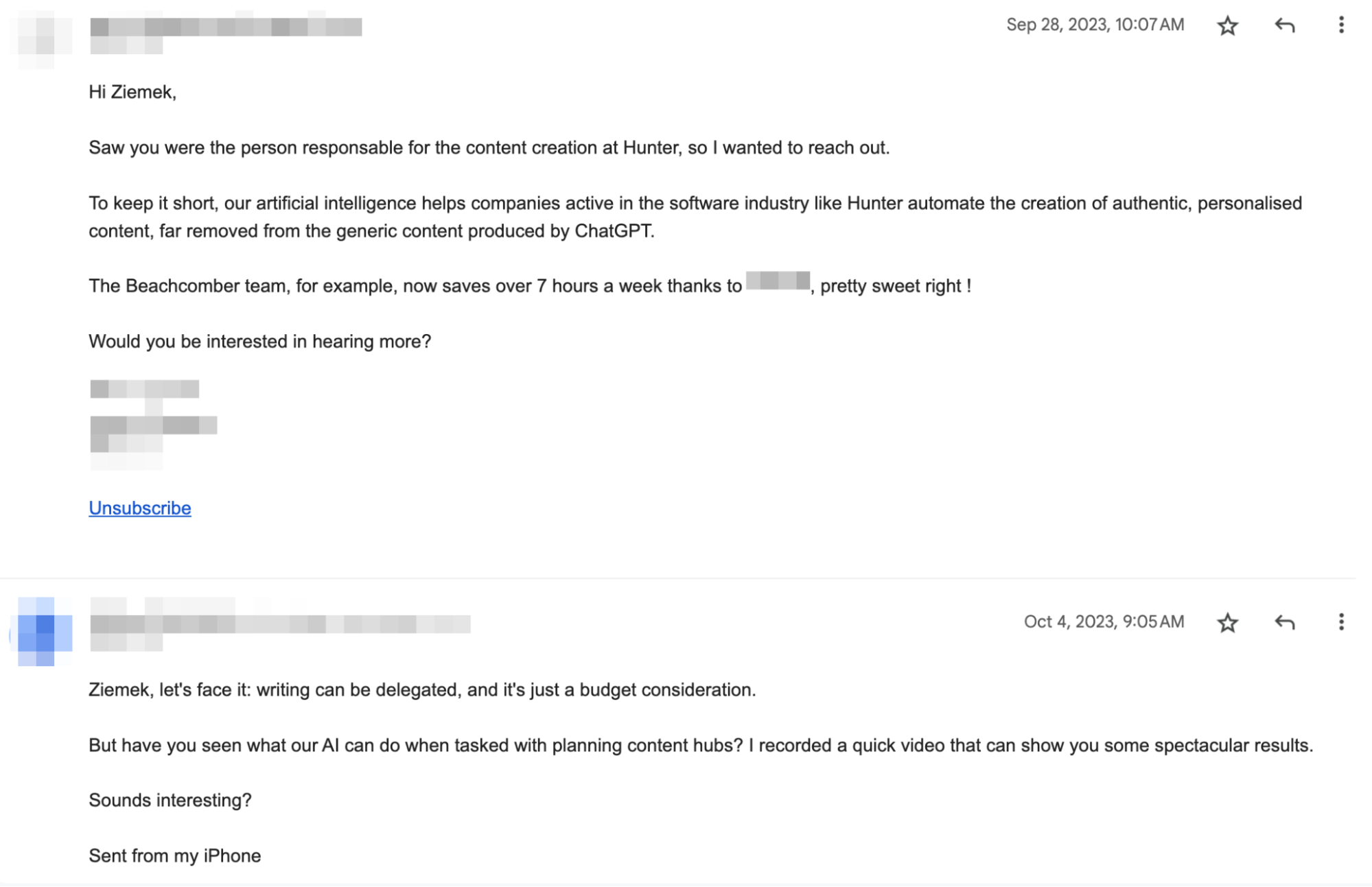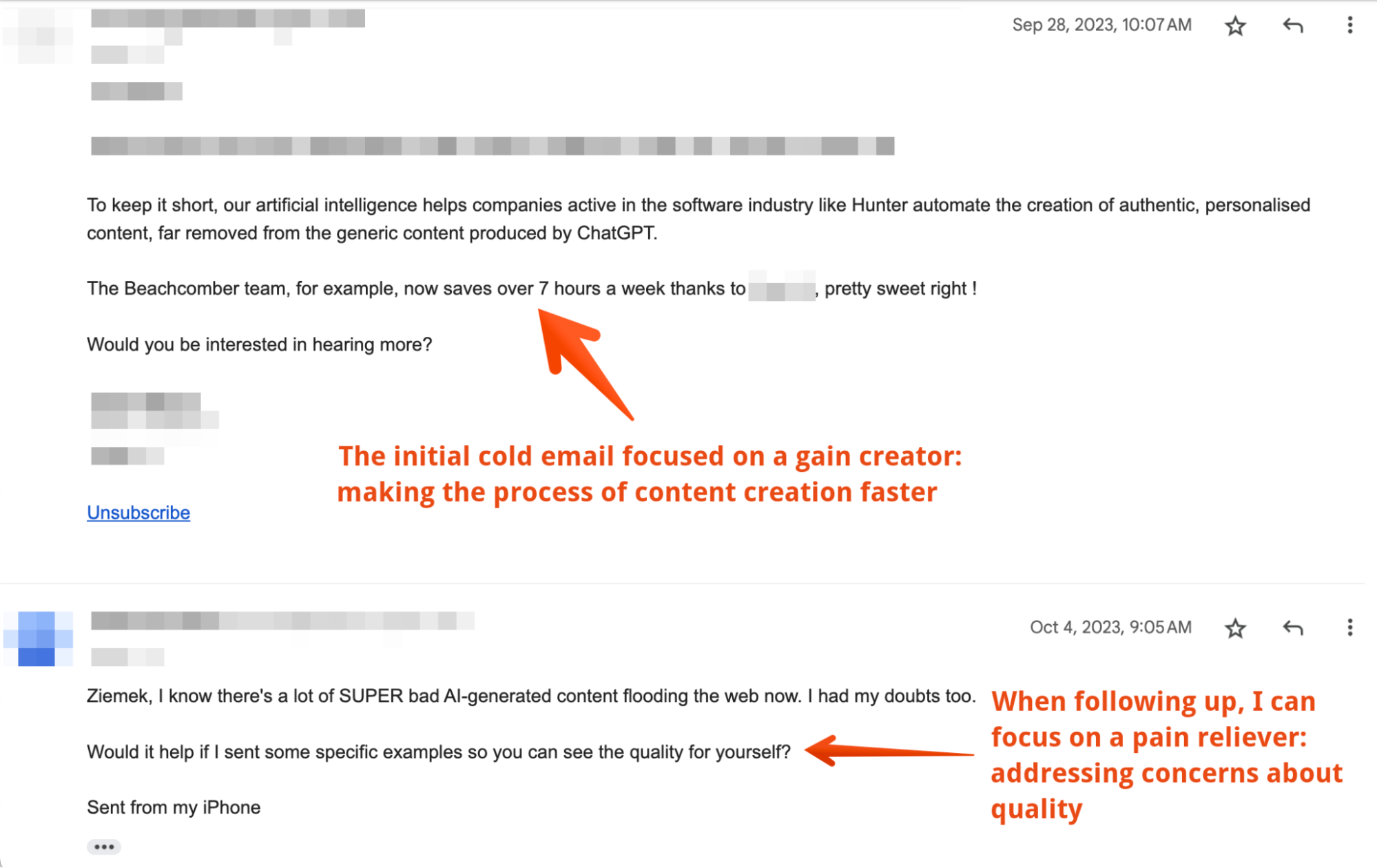After you’ve nailed your Value Proposition Canvas and established a clear WARM goal for your campaign, the final strategic piece of the puzzle is deciding what happens after your first email.
You need a plan for:
- Recipients who don’t reply to your cold emails, and
- Those who reply but then lose interest.
In both cases, the reasons why a given recipient doesn’t reply are the same – they haven’t seen your email, or they weren’t persuaded.
In this article, I’ll tell you how to create a cold email sequence that includes following up and maximizes your odds of getting positive replies.
Note: I won’t cover the writing techniques you can use when creating follow-up emails – just the strategy.
Reasons why people don’t respond to cold emails
No matter your specific email, there are two general scenarios when you don’t get a reply (provided your email didn’t bounce or land in the spam folder.)
- The recipient received your email but didn’t open it or didn’t read it – either ignoring it altogether or deleting/archiving/reporting it as spam without reading it.
- The recipient read your email but wasn’t persuaded to respond – this can happen for a variety of reasons:
- They didn’t think it was worth their time.
- They had more pressing issues to deal with.
- They took some time off work and didn’t care to reply before.
- Your offer didn’t resonate with their current needs.
- They had objections you didn’t anticipate.
- Your call to action was too demanding.
Regardless of the specific reason, an effective follow-up sequence should have the following goals:
- Attention: You want to appear at the top of the recipient’s inbox again, so you get another shot at them opening your email and giving it some attention.
- Interest: You want to convince your recipient to reply if they opened the previous one but didn’t reply for whatever reason.
How to plan a cold email sequence strategy
We’ve established that your goals when following up should be to get more attention and generate more interest.
Now, let’s discuss creating a cold email sequence strategy to help you achieve those goals.
Your strategy for a cold email sequence needs to answer the following:
- How many emails do you want to send in the sequence?
- What do you want to send in each follow-up email, and how will it generate attention and interest?
No two campaigns are the same, so it’s impossible to answer these questions in the abstract.
Below is a list of best practices that can help you answer these questions for yourself.
Best practices for cold email sequences
Always follow up
Following up is an absolute must.
In a typical outreach campaign, you should consider sending at least two follow-up emails:
- One that focuses on a different benefit for the recipient.
- One that provides an alternative CTA.
Don’t spam
Technically, sending more follow-ups allows you to present more benefits and provide more value. But on the other hand, you don’t want to annoy your prospects – it puts you at the risk of getting spam complaints.
You need to consider that you’ll send cold emails to some prospects with zero interest in your offer.
- No matter how great your targeting is, you’ll often rely on third-party data providers, and they’re never fully accurate.
- People’s priorities constantly evolve, so even if you find a prospect who should be happy to see your email, they may ignore it as their priorities change.
If you keep bothering these prospects with countless follow-up emails, they’ll likely mark your email as spam and damage not just your campaign but the email deliverability for your entire email domain.
It’s a difficult question to answer because it depends on your audience: the industry and the seniority of your prospects.
I recommend testing your campaigns on a sample of prospects first and checking if the consecutive emails in a longer follow-up sequence get opened or not.
Follow up in the same thread
You have two options for following up:
- Sending a new email that references the initial cold email.
- Sending the follow-up in the same email thread.
The first option has the advantage of allowing you to use different subject lines.
However, in my view, it’s usually much better to go with the second option, and here’s why:
- Even though each email in the thread is distinct, they add context to one another and can form a fuller picture of what you’re offering.
- From a technical standpoint, it’s easier for the recipient to review your previous emails.
- It doesn’t look as spammy – it feels like consecutive follow-ups add to one conversation as opposed to starting multiple conversations.
- It puts more pressure on the recipient to reply because they see how often they’ve ignored your emails.
Hunter Campaigns makes it super easy to add multiple follow-up emails that will be sent in the same thread.

Don’t send "nudge" emails
You can never know why a specific recipient hasn’t replied: was it because they didn’t pay enough attention to your email or because they weren’t convinced? Or maybe a mix of both?
That’s why you should always aim to get more of your recipient’s attention and build more interest. Sending “a quick nudge” is a waste of a follow-up.
If they want to, your prospects can easily find and read your previous emails. There’s no reason to restate your points.
If I’m not convinced by your first email, this won’t do anything to win me over:

Instead, send an email that will get you more of your recipient’s time and a chance to persuade them.
Let me rewrite the follow-up quoted above to show you what I mean.

Use two levers to reframe your offer.
When trying to persuade someone to reply, there are two main levers you can use:
- You can focus on a different pain reliever/gain creator.
Ideally, you should use your strongest selling point in your initial cold email.
But if that doesn’t work, repeating it ad nauseam won’t work either.
What you should do instead is leverage a different selling point.
I especially recommend contrasting pain relievers with gain creators, meaning that if your first email focused on providing a gain for the prospect, your follow-up could focus on alleviating their pain.

2. You can use the rejection-then-retreat technique: change the CTA so replying is less intimidating.
No matter how accurately you can diagnose your prospects' pains and gains, some won’t reply if you ask for too much.
That’s why you should consider the rejection-then-retreat in one of your follow-up emails – ideally towards the end of the sequence.
Rejection-then-retreat is a tactic coined by Robert Cialdini. It means starting with a large request and, when it gets rejected, "retreating" to a smaller request.
Because in the eyes of the recipient, you're making a concession, they feel obliged to comply in accordance with the rule of reciprocity.

Give your recipients time.
Despite what some people may say, there’s no universal rule for how many days you should wait before sending a follow-up.
I think it’s about being polite and professional: you need to assume that if someone doesn’t reply, it’s for a good reason.
Schedule your follow-ups with reasonable frequency to give your recipients some breathing room.
Cold email sequence – strategy template
Putting together the Value Proposition Canvas, your WARM goal for the entire campaign, and your vision for the specific follow-up emails in the sequence, you can outline the strategy for your campaign using this template:

